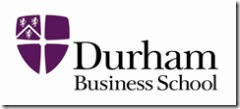Colin speaks: Senior Management Perspective
Establishing a climate for improving knowledge worker productivity
 So what do we do about improving knowledge worker productivity? In my view there is no single, right place to start. You certainly don’t have to wait until this is a top priority for the CEO. There is plenty to do as an individual, team, department, division. However, the top management perspective is important and there are a number of important areas to tackle that together can help create a climate for improving knowledge worker productivity.
So what do we do about improving knowledge worker productivity? In my view there is no single, right place to start. You certainly don’t have to wait until this is a top priority for the CEO. There is plenty to do as an individual, team, department, division. However, the top management perspective is important and there are a number of important areas to tackle that together can help create a climate for improving knowledge worker productivity.
Strategic context
When Peter Drucker set out the challenge of improving knowledge worker productivity in his 1999 article (Knowledge Worker Productivity: The Biggest Challenge, California Management Review Vol 41 No 2 Winter 1999) he also set out a number of factors that contribute to improving productivity. The first was to focus on ‘determining the task’: to be clear about how the knowledge worker contributes value to the organisation and then to really focus on this, eliminating what hampers the knowledge worker from concentrating on adding value. This is a challenge for each of us as individuals – have you tried tracking how you spend your time in the course of a week recently? It is also a challenge for top management to communicate the strategic context, the vision, the long term goals and the immediate priorities that help each of us see our role and contribution as part of a bigger picture. If we remain in the dark about this bigger picture how can we know where to focus?
We will return to a number of the other key areas identified by Peter Drucker.
Roles and Structures
Consider your organisation:
· Who determines the level of investment to improve knowledge work productivity?
· Who has responsibility for realising the potential of a major investment in desktop infrastructure to improve organisational performance?
· Who is responsible for knowledge work productivity?
Typical answers which include: “the IT function”, “the management team”, “HR provide some training in Word and Outlook” and “what do you mean?” are all inadequate.
A particular challenge is that all the support functions in the organisation (HR, IT, facilities / property) have a crucial role to play. Consider a few examples: do the HR provided education programmes for improving personal effectiveness and leadership development address making use of desktop tools, for example to manage time and to enable effective virtual working? Are IT investments in wireless networks linked with changes to meeting rooms to provide electrical power, projectors, smartboards and printers in meeting rooms? Is there still a separate video conferencing suite or are people learning to make use of desktop conferencing capabilities and to make video conferencing an option at any meeting? Does property strategy reflect the increasing trend for flexible and mobile working and provide office space for collaborative, informal working and for highly interactive team working when people are together in the office?
There is no single answer in terms of roles and structures. In most organisations there is a need for much better co-ordination and for effective teamwork across the different support functions. A key step top management need to take is to review overall roles and responsibilities and establish a framework that addresses the area of knowledge worker productivity. This will almost certainly include IT, HR and facilities / property. In most, if not all organisations, some level of change will be required to address the overall opportunity.
Leadership: getting the climate right.
Talent management and creating a ‘great place to work’ is a focus in many organisations. Empowering people (to work successfully and effectively) is increasingly seen as important. Looking at some corporate missions statements supports this: “Credit Suisse will empower people to work openly and respectfully with each other and with clients to deliver superior results that will lead to success and prosperity for all its stakeholders”; “Starbucks: Provide a great work environment and treat each other with respect and dignity”. Even Dilbert gets in on the act “Our mission is to continue to interactively network high-payoff catalysts for change so that we may continually maintain cutting edge services while promoting personal employee growth”.
Dilbert, with his mission statement generator drawing on the latest buzzwords, does make the point that there can be a need to be cautious about mission statements and their link with the reality of management priorities and actions. This brings me back to Peter Drucker. Another of his factors that determine knowledge worker productivity is that knowledge workers should be treated as an asset rather than a cost: knowledge workers need to want to work for the organisation and attracting and retaining the best knowledge workers is a key role for management. The challenge is to provide the leadership and the organisational climate where we don’t just acknowledge the importance of this but we do something about it. Many organisations certainly are tackling this – the focus on talent is increasingly widespread. The thing that still, very often, seems to be missing is a co-ordinated emphasis on people, information, process, technology and place – the wide range of factors that together contribute to knowledge work productivity. Who is going to provide the vision and the leadership in your organisation?
So for top management there are likely to be issues of communication, roles and responsibilities and leadership. A key starting point is probably to take a strategic view and consider how and where knowledge work contributes to value creation in your organisation.
Over the next few weeks we’ll focus on some more specific areas. Next time we will start to consider the implications for the IT function.
Colin Ashurst
 Senior Teaching Fellow: Information Systems and Business Transformation
Senior Teaching Fellow: Information Systems and Business Transformation
Chief Information Officer
Durham Business School, University of Durham
read more from Colin's guest blogger series by clicking on his category on the right pane